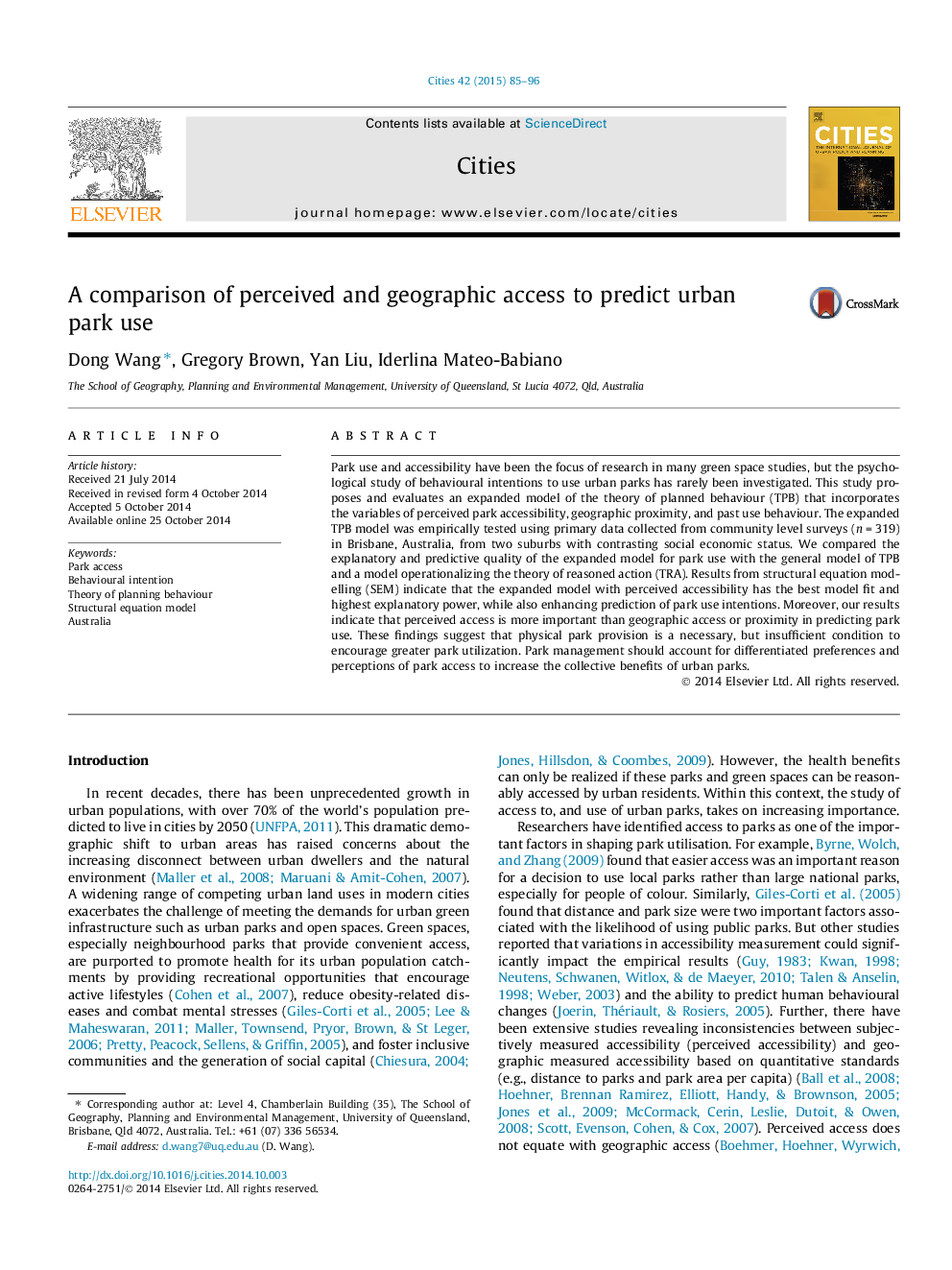| Article ID | Journal | Published Year | Pages | File Type |
|---|---|---|---|---|
| 1008339 | Cities | 2015 | 12 Pages |
•This study presents and empirically tests an expanded TPB model to predict future park use.•Attitude towards parks has important mediating effect on future park use.•Perceived accessibility is the strongest predictor of park use behaviour.•Physical park provision is a necessary, but insufficient condition to encourage greater park use.
Park use and accessibility have been the focus of research in many green space studies, but the psychological study of behavioural intentions to use urban parks has rarely been investigated. This study proposes and evaluates an expanded model of the theory of planned behaviour (TPB) that incorporates the variables of perceived park accessibility, geographic proximity, and past use behaviour. The expanded TPB model was empirically tested using primary data collected from community level surveys (n = 319) in Brisbane, Australia, from two suburbs with contrasting social economic status. We compared the explanatory and predictive quality of the expanded model for park use with the general model of TPB and a model operationalizing the theory of reasoned action (TRA). Results from structural equation modelling (SEM) indicate that the expanded model with perceived accessibility has the best model fit and highest explanatory power, while also enhancing prediction of park use intentions. Moreover, our results indicate that perceived access is more important than geographic access or proximity in predicting park use. These findings suggest that physical park provision is a necessary, but insufficient condition to encourage greater park utilization. Park management should account for differentiated preferences and perceptions of park access to increase the collective benefits of urban parks.
